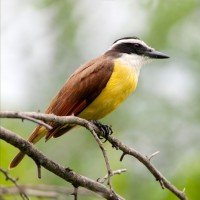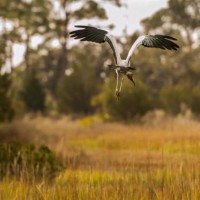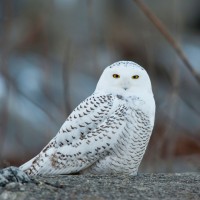- Overview
- Full Itinerary
- Photo Gallery
- Costing
- Travel Details
- Trip Reports
- Guides
- Map
- Know Before You Go
- Other Trips You May Like
Join us in January for an Arizona birding and nature tour, a gorgeous time to explore Arizona’s saguaro deserts. Temperatures are typically perfect and light is ideal for photography. Birds abound as wintering species arrive to join residents such as Greater Roadrunner, Vermilion Flycatcher, Verdin, Gambel’s Quail, Pyrrhuloxia, and Phainopepla. Every year rarities occur in Tucson’s tree-lined parks or outlying pecan groves where in many years Lewis’ Woodpecker can be found.
This Arizona birding tour starts and ends in Tucson, a delightful, multicultural city recognized for its local cuisine. Indulge in warm desert days among saguaros as we walk trails in Saguaro National and Catalina State Parks with fine views of the surrounding Sky Island Mountain ranges. Visit desert botanical gardens that hummingbirds frequent and the famed Sonoran Desert Museum. Northwest of the city, visit Santa Cruz Flats, where big agricultural fields create a winter birding hotspot with habitats ranging from turf farms to ponds and fields. We search for Yellow-headed Blackbird, Ferruginous Hawk, and Crested Caracara. One section of the flats is a reliable spot to find three species of thrashers: Curve-billed, Bendire’s, and with some luck, Le Conte’s.
Enjoy three nights in Tucson on this Southeast Arizona birding tour followed by two nights along the Santa Cruz River south of the city in view of the Santa Rita Mountains. At Madera and Montosa Canyons, Elegant Trogon may overwinter, feeding on fruits and on warm days, large insects. Trails near the artisan town of Tubac are ideal for natural history exploring. This tour make a nice short getaway, or pairs perfectly with our Arizona Fall Sampler that ventures to Patagonia, the Huachuca Mountains near Sierra Vista, the San Pedro River, and Sulphur Springs Valley.




Tour Highlights
- Explore stunning Saguaro National Park, where, on quiet roads and trails through dramatic cactus forests, we seek out Gilded Flicker, Gila Woodpecker, Gambel’s Quail, Harris’s Hawk, and other desert-associated species
- Learn about the geology and biodiversity of the saguaro desert while soaking in some southwestern sunshine
- Tally sightings of raptors, hummingbirds, wintering sparrows, and longspurs and desert mammals such as Javelina and Black-tailed Jackrabbit
- Dine in fun, local restaurants that feature a mix of borderland and bistro-style international cuisine
- Enjoy photography—our guides lend tips as we travel and site various birds and wildlife
- Seek out that elusive Le Conte’s Thrasher!




Trip Itinerary
Itineraries are guidelines; variations in itinerary may occur to account for weather, road conditions, closures, etc. and to maximize your experience.
Sun., Jan. 12 Arrive in Tucson | Arizona-Sonoran Desert Museum | Local Cuisine
Tucson is surrounded by picturesque mountains. After a mid-day meet-up at the airport, we wind through them to visit the world renowned Arizona-Sonoran Desert Museum, a wonderful introduction to the rich natural history of the area. Its aviary lets you see species up close and personal, and mammals are displayed in open-air habitat zones with plants of the region. Wild species, such as Costa’s and Anna’s Hummingbirds, are attracted to the lush vegetation, so have your binoculars handy! There should be shrubs still in bloom and butterflies feeding at them as well.
Following our visit to the museum, we take a scenic drive to our hotel over Gate’s Pass to check into our lodgings in the northwestern corner of Tucson and enjoy dinner at a nearby favorite local restaurant.
Accommodations at Lodge on the Desert (D)
Mon., Jan. 13 Catalina State Park | Tohono Chul Park | EL Rio Preserve
We start the morning off with breakfast at a local favorite, then it's off to indulge in another immersion into the Saguaro Cactus forests so unique to this area. Catalina State Park has some lovely trails, and brushy habitat prized by Rufous-winged Sparrow. Views of the Catalina Mountains are stunning here.
After a morning at the base of Mount Lemmon, we head over to a delightful botanical garden not far away. Tohono Chul has an excellent café where we enjoy lunch with the hummingbirds and a walk to see what plants are still in bloom, and the birds and butterflies attracted to them. Tohono Chul boasts thousands of native and native-adapted plants on their grounds.
Once leaving Tohono Chul Park we will work our way along the Santa Cruz River, to a newly formed spot, quickly turning into a favorite among wintering waterfowl, El Rio Preserve. In just a few short years this new park has quickly become a favorite wintering spot for many ducks, including Mexican Duck and Cinnamon Teal. After a stop at El Rio, time permitting, we take a drive through the agriculture fields of Marana to look for Burrowing Owl, Ferruginous Hawk, and other frequenters to the farm fields
Freshen up at the hotel, then enjoy dinner at another favorite local restaurant.
Accommodations at Lodge on the Desert (B,L,D)
Tues., Jan. 14 Sweetwater Wetlands | Saguaro NP West| Tucson Local Parks
Sweetwater Wetlands, one of Tucson’s many birding hotspots, will be first on the docket after breakfast on our second full day. Harris’s Hawk rest in tall eucalyptus trees, while Song Sparrow and Abert’s Towhee hide in thick stands of salt brush. Ducks float past cattails and willows as Red-winged, Yellow-headed, and Brewer’s Blackbird are on the wing. One year, we had a surprise glimpse of a Bobcat on the prowl! This wetlands is a true treasure in the heart of Tucson and 4th on the list of hotspots with the most species in Arizona!
After a nice moring at Sweetwater Wetlands we make our way out west to Saguaro National Park, a 90,000-acre wilderness preserve teeming with desert life. The park is home to Vermilion Flycatcher, Gilded Flicker, Gila Woodpecker, Rufous-winged and Black-throated Sparrow, Curve-billed Thrasher, and a host of other species. Greater Roadrunner may zip past us, chasing lizards! After a couple of short walks and an informative drive, we leave the park on its southern side.
Returning to Tucson for a nice evening stroll before dinner at a wonderful park near the hotel. Reid Park, an area of 131 acres, the foundation of which was laid in 1925, is another local favorite, and one of the best places in town to photograph Vermilion Flycatchers; these park birds love the open grassfields of the park.
Accommodations at Lodge on the Desert (B,L,D)
Wed., Jan. 15 San Xavier del Bac | Madera Canyon
Today is a small travel day starting with breakfast at another local favorite before we make a stop at the beautiful San Xavier del Bac mission church for photos and to learn about the Tohono O’odham people. A National Historic Landmark, completed in 1797, San Xavier Mission has been a stopover for humans traveling the Santa Cruz Corridor for centuries.
Weather pending, we have a picnic, or a local restaurant lunch, then spend the afternoon in Madera Canyon’s oak-pine woodland and the grasslands that surround it. Scenery is dramatic here, and birding can be excellent. Madera Canyon, one of the most famous birding areas in the United States, is a north-facing valley in the Santa Rita Mountains with riparian woodlands along an intermittent stream, bordered by mesquite, juniper-oak woodlands, and pine forests. Madera Canyon is home to over 250 species of birds and, in berry years, a good spot to find wintering Elegant Trogon and possibly wintering Painted Redstart. Arizona Gray Squirrel can be found here, and Black-tailed Jackrabbit occur in the grasslands surrounding the peaks. Acorn Woodpecker call from their food-storage trees and Arizona Woodpecker may visit local feeders to join the array of hummingbirds. We may also see Common Bushtit and Hutton’s Vireo, and we’ll certainly see Mexican Jay. Depending on what we find here, we may also venture along Proctor Road, another productive birding hotspot.
In the afternoon we settle into our lodgings and enjoy dinner at the nearby favorite.
Accommodations at Tubac Golf Resort & Spa (B,L,D)
Thurs., Jan. 16 Montosa Canyon | Tubac | Tumacacori | Local Hotspots
The corridor south of Tucson is legendary for winter birding, much of it centered on the Santa Cruz River. A trail connects the artisan village of Tubac to the historic site of Tumacacori National Monument and birding can be excellent here. Montosa Canyon is good for a variety of species and known as a favorite wintering location for Elegant Trogon that do not migrate south.
We visit Montosa in the morning, then walk along the Santa Cruz River in a couple of different spots to make the most of our day. We network with other guides to know the latest sightings and have a fun and full final day.
Dinner is at a favorite restaurant in Tubac.
Accommodations at Tubac Golf Resort & Spa (B,L,D)
Fri., Jan. 17 Canoa Pond | Return to Tucson | Connect to our Arizona Sampler Journey or Departures
Our flock disperses today. After breakfast, we pack up and head out to enjoy some local birding at a pond at Canoa Ranch, a birding spot on our route that can be quite productive. We then head to the airport, reaching there by 10:30 AM for flights out after NOON. (B)
Cost of the Journey
Cost of the Journey is $2,590 DBL / $3,140 SGL based on double occupancy from Tucson, AZ. The tour price includes airport transfers, 5 nights’ accommodation, ground transportation in vans, professional guide services, park and other entrance fees, and miscellaneous program expenses. The tour price does not include round-trip airfare to and from Tucson, personal expenses such as laundry, telephone, drinks from the bar, and gratuities for luggage handling or other services. Guide gratuities are at your discretion.
Travel Details
Please plan to make air travel plans only after the minimum group size has been met. We will send you a confirmation email as soon as the trip has been confirmed.
Arrival and Departure Airport: Tucson International Airport (TUS)
Arrive: Plan to arrive January 12, no later than 1:00 PM.
Depart: Plan January 17 flights leaving after 12:00 PM. We plan to arrive at the Tucson International Airport (TUS) by 10:30 AM. If you wish to extend your stay in Tucson, you may use the below hotel recommendations or plan accordingly on your own.
Travel Tip: If you want to arrive a day or two early or stay on after the tour, Tucson is a great city to explore. The downtown area, which is close to the University of Arizona campus, offers many restaurants and shops. Downtown Tucson is about 8 miles from the airport and can be reached by a taxi, Uber/Lyft, or renting a car. You will need to return to the airport by 1 pm on January 12 if you are not staying at an airport hotel.
Hotel Recommendations: If you want to relax and stay near the airport after arrival (we can pick you up at these hotels), we recommend: Courtyard by Marriott Tucson Airport (520) 573-0000. Does staying downtown and exploring the many shops and restaurants sound interesting? We would recommend: Home 2 Suites by Hilton (520) 274-7400 The Leo Kent Hotel by Marriott (520) 549-5330. If you have a rental vehicle and plan on visiting Tohono Chul, a great hotel in that area is La Posada. There are many restaurants in this area as well. La Posada Lodge & Casitas (520) 492-6637.
Browse below for trip reports and species lists from past versions of this and other tours from this destination.
Arizona
- May 2012
- March 2016
- January 2019
- November 2019
- January 2020
- May 2021
- November 2021
- January 2022
- February 2022
- May 2022
- November 2022
- January 2023
- February 2023 (Sweetheart Birding)
- February 2023
- May 2023
- February 2024
- April 2024
- May 2024
Monsoon Madness
- August 2012
- August 2014
- August 2016
- August 2017
- August 2018
- August 2019
- July 2021
- August 2021
- July 2022
- August 2022
- August 2023
- August 2024
Sunshine & Saguaros
- November 2023
- January 2024
-
James Petersen

James grew up in New Jersey and started birding at a young age. He continued that passion by getting an undergraduate degree in Wildlife Ecology from the University of Maine. Since then, he has worked and birded extensively across the United States, including conducting point counts and banding ducks in Maine; identifying and counting waterfowl in Nebraska; counting migrating raptors in Texas, Arizona and Wyoming; and surveying for Northern Goshawks in northern California. The past three springs he has been a bird guide in the Chiricahua mountains in southeast Arizona, and he enjoys sharing his passion for birds with others. His favorite bird is the Red-headed Woodpecker.
Other trips with James Petersen
-
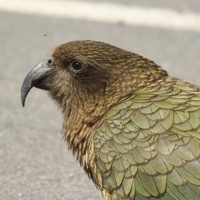 Birding New ZealandOctober 8 - 24, 2024
Birding New ZealandOctober 8 - 24, 2024 -
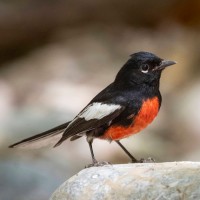 Southeast Arizona: Sky Island Fall Sampler FULL - Check out Arizona: Sunshine & SaguarosNovember 3 - 10, 2024
Southeast Arizona: Sky Island Fall Sampler FULL - Check out Arizona: Sunshine & SaguarosNovember 3 - 10, 2024 -
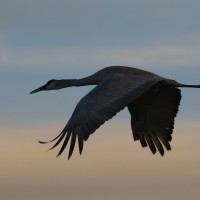 New Mexico: Winter Birds & Grand LandscapesJanuary 19 - 27, 2025
New Mexico: Winter Birds & Grand LandscapesJanuary 19 - 27, 2025 -
 Best of Guatemala: Birding & Culture Three Great LodgesMarch 4 - 14, 2025, w/Tikal extension
Best of Guatemala: Birding & Culture Three Great LodgesMarch 4 - 14, 2025, w/Tikal extension -
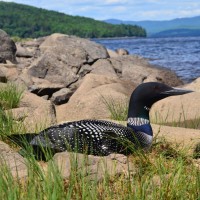 Summer in Maine: From Acadia to the NorthwoodsMay 21 - 28, 2025
Summer in Maine: From Acadia to the NorthwoodsMay 21 - 28, 2025 -
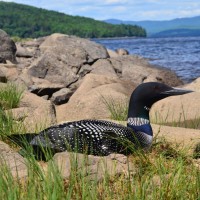 Summer in Maine: From Acadia to the NorthwoodsJuly 6 - 13, 2025
Summer in Maine: From Acadia to the NorthwoodsJuly 6 - 13, 2025 -
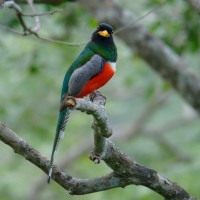 Arizona Monsoon Madness: Birding & Nature in a Season of Wonder!August 2 - 9, 2025
Arizona Monsoon Madness: Birding & Nature in a Season of Wonder!August 2 - 9, 2025 -
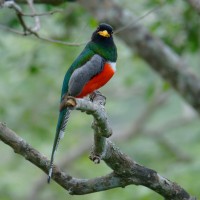 Arizona Monsoon Madness: Birding & Nature in a Season of Wonder!August 17 - 24, 2025
Arizona Monsoon Madness: Birding & Nature in a Season of Wonder!August 17 - 24, 2025 -
 Spain: Birding & NatureSeptember 4 - 16, 2025
Spain: Birding & NatureSeptember 4 - 16, 2025 -
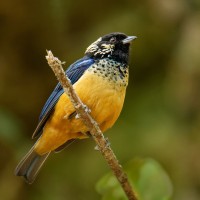 Western Panama: Tranquilo BayOctober 18 - 25, 2025, w/Mt. Totumas extension
Western Panama: Tranquilo BayOctober 18 - 25, 2025, w/Mt. Totumas extension -
 Belize: Birds & BeachesComing November 2025
Belize: Birds & BeachesComing November 2025 -
 Southeast Arizona: Sky Island Fall SamplerNovember 2 - 9, 2025
Southeast Arizona: Sky Island Fall SamplerNovember 2 - 9, 2025
-
-
Chris Harbard
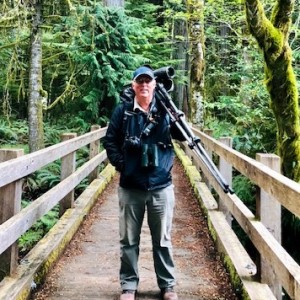
Chris Harbard is a well-known British ornithologist and conservationist who now lives in SE Arizona. After 24 years working with the world’s largest bird conservation organisation, the Royal Society for the Protection of Birds, he moved to the Austrian optics company Swarovski and managed their birdwatching website for several years. He is now a freelance author, editor, broadcaster and lecturer, as well as an occasional bird guide in SE Arizona where he and his wife help to run the Southwest Wings Birding and Nature Festival. He is on the board of the Arizona Field Ornithologists.
Chris writes for Birdwatch magazine and was editor of the Birdwatchers' Guides series of books. His own books include Birdwatch, Songbirds, A Birdwatcher's Quizbook, A First Guide to Birdwatching.
Working as a naturalist lecturer on board expedition cruise ships for the last eighteen years has taken him to remote areas of the Arctic, Antarctic, Atlantic and Pacific. Although his main area of interest is birds, especially seabirds, he also enjoys a range of other wildlife such as cetaceans, butterflies, dragonflies and plants.Other trips with Chris Harbard
-
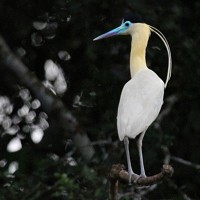 Amazon Rainforest Discovery: By Land & WaterOctober 23 - November 2, 2024
Amazon Rainforest Discovery: By Land & WaterOctober 23 - November 2, 2024 -
 Lesser Antilles Endemics: A 3-Island ClassicDecember 3 - 14, 2024
Lesser Antilles Endemics: A 3-Island ClassicDecember 3 - 14, 2024 -
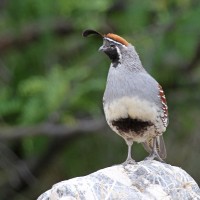 Arizona: Sky Island Winter Birding Pair it with our Sunshine & Saguaros trip!January 18 - 24, 2025
Arizona: Sky Island Winter Birding Pair it with our Sunshine & Saguaros trip!January 18 - 24, 2025 -
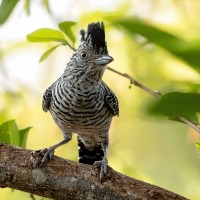 Best of Belize Crooked Tree, Lamanai & Chan ChichFebruary 9 - 17, 2025
Best of Belize Crooked Tree, Lamanai & Chan ChichFebruary 9 - 17, 2025 -
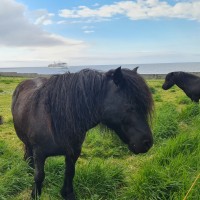 Wild Scotland CruiseMay 18 - 29, 2025
Wild Scotland CruiseMay 18 - 29, 2025 -
 Amazon Rainforest Discovery: By Land & WaterNovember 9 - 15, 2025
Amazon Rainforest Discovery: By Land & WaterNovember 9 - 15, 2025 -
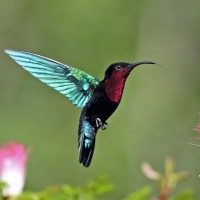 Lesser Antilles Endemics: A 3-Island ClassicComing December 2025
Lesser Antilles Endemics: A 3-Island ClassicComing December 2025
-
Essential Information +
Packing List +
Suggested Reading List +
Useful Links +
Photo credits: Banners: Tucson Mountain State Park Scenic (NJ Stock), Loggerhead Shrike (NJ Stock), Desert Flowers (NJ Stock), Tucson Scenic (Steve Wolfe), Acorn Woodpecker (Hugh Simmons) Thumbnails: Harris’ Hawk (Steve Wolfe), Broad-billed Hummingbird (NJ Stock), Albert’s Towhee (NJ Stock), Yellow-headed Blackbird (NJ Stock), Anna’s Hummingbird (NJ Stock), Crested Caracara (NJ Stock), Greater Roadrunner (NJ Stock), Gila Woodpecker (NJ Stock)





















